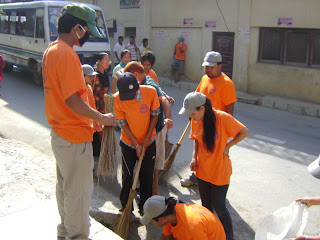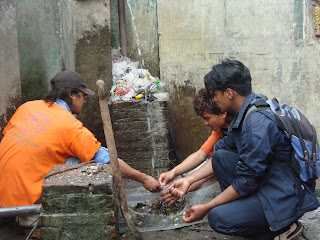Oatmeal: Yes, oatmeal! And not just in cold snowy weather. It is a great source of a long lasting stick to the ribs energy food, full of vitamins and minerals with heart health benefits .Eat some oatmeal 2-3 hours before workout.
Yogurt: Yogurt is Loaded with nutrients such as high quality bone building calcium, protein, B vitamins and the healthy immune boosting bacteria that line our gastrointestinal tract. A great food, snack or snack topping, it's portable and easy to find. Eat one hour before a workout as a snack to give energy especially when the last meal was a few hours ago.
Banana: The banana made my list since almost everyone loves bananas, but most of us think that they are fattening! Well, at about 120 calories for a medium one, loaded with potassium, vitamin C, sweet and starchy, they make the list. Bananas are also versatile. Satisfy the starch urge by adding them to a fruit salad or cereal; thicken up a smoothie; stuff one in a bag to go; eat one on the run and even buy one at those fruit stands (we're less likely to get sick from a banana because of the peel). eat 30 minutes to 1 hour before a workout.
Salad with veggies. Veggies are loaded with vitamins, minerals, phytochemicals and great complex carbohydrates. they fill us up without filling us out and they supply great energy. Add in 1/2 cooked chilled pasta and make it a dinner salad.
Baked Potato. Take a cue from bodybuilders who live on baked potatoes during their carb eating training days. Make it a meal by adding legumes, salsa or even cottage cheese.
High Fiber Cereal. Start the day with a high fiber wheat cereal with low fat milk and a favorite fruit. Aside from the high fiber benefits, whole grains supply us with energy to start the day physically and mentally. Want to snack during the day? Put mixed high fiber cereals in a baggie with dried fruit, and munch away an hour or two before a workout!
So, these are just a few carbohydrate foods. Of course, there are scooped bagels, tortilla's filled with veggies, california rolls, and the dreaded pasta if we eat an appetizer portion for those of us watching our weight.
Walking
Walking is a suitable fitness activity for all age groups young, pregnant and elderly people.
You can walk for pleasure in accordance with a structured program or alternatively incorporate walking into normal everyday life.
There are many different ways of walking: slow, brisk, fat and power walking, all of which have beneficial effects.
Walking is one of the very best all round exercises for muscular, cardiovascular and respiratory fitness.
A brisk half an hour walk, five days a week will provide exercise for the heart, stomach muscles, arms and legs, without straining the joints and is a great stress-reliever.
Moreover, walking is not just an outdoor activity. Although perhaps less enjoyable, it can be done indoors. A treadmill can be used regardless of the weather and provides the same benefits to the heart, lungs and legs.
When you walk, keep your shoulders wide up and relaxed, and let your arms hang loosely by your side so that they swing backward and forward naturally as you walk.
When faced with a lift or escalator in shops and railway stations, think of your heart and the muscles of your body, and seize your chance for increased fitness: walk up instead. When you are at home, do you put things at the bottom of the stairs to take up later? Seize the opportunity and take them up now. Make several trips if necessary and revel in the easy availability of another opportunity for activity.
Benefits: good cardiovascular, respiratory and muscular fitness, stamina in legs, stomach muscles, shoulders and arms.
Riding
Riding is an aerobic exercise which develops muscular, cardiovascular and respiratory fitness. There are different types of horse riding, some of which make greater demands on your body than others.
When your mount is walking, your leg muscles, particularly your calves, are constantly active as you make contact with its girth and nudge it along with the back of your ankles. As you go into a trot, your leg muscles continue to grip the horse's girth but now your body is faced with the additional challenge of rising from the knees in your seat - up, down, up, down, repeatedly, using your calves and knees as you push off from the saddle. Once you are into a canter, you no longer rise in the saddle, but your leg grip needs to be powerful if you are to stay astride.
Lean forward over the horse's neck to touch your left toe with your right hand. Now repeat the process on the other side. Continue until you feel limbered up.
With arms outstretched, and head up and slightly back, turn around as far as possible, twisting your upper body from the hips. This is designed to increase the suppleness of your back and waist.
In order to loosen up your back muscles, fold your arms over your chest and lean right back on to the horse's quarters, with your legs remaining in the normal riding position.
Buying and owning a horse can be very expensive but you can hire them quite easily. Once you have learned to ride, the options are unlimited:
Hacking out once or twice a week with a riding school (trotting, cantering, galloping and jumping in a variety of terrains)
Show jumping (taking the horse over a series of different types of jumps in competition).
Dressage (taking the horse through a series of specific and carefully controlled manoeuvres).
Cross-country trials (timed competitions over set courses with a number of different styles of jump).
Riding holidays in which you trek several miles a day (a good introduction to horse riding for beginners).
Mountain-trail riding of a group trek along a trail in mountainous countryside
It is best to learn to ride with a qualified instructor. The cost of riding will vary from area to area, whereas hacking in a group, for example, will be less costly. You should always, without exception, wear a safety hat.
How to exercise your Brain?
- We all have little lapses in memory like leaving the keys in the door, forgetting someone's name or missing an appointment. Rarely do we think we are getting old or senile. Most times it's due to too much going on in that brain of yours. You have too much on your mind or you're stressed out. Maybe you didn't concentrate enough on what it was you were supposed to remember.
- Research shows that brainpower can increase with mental activities in older people. Aging does not mean automatically losing mental capacity. The National Institute of Aging has conducted a series of tests that prove most dramatic memory decline occurs around age 70, if it occurs at all. Even though memory may fade with time, thinking ability remains strong. Vocabulary and reasoning skills often improve with age.
- No matter what your age, exercising your brain may make the difference between using it and losing it. Or if you are young and have older family members or friends who seem to be losing memory, encouraging brain activity can help.
- Activities such as doing crossword puzzles, playing word games or cards strengthens the synapses between brain cells in memory transmission areas. Physical exercise can increase mental abilities 20% to 30 %, according to recent studies. Journal writing and working with your hands to build or create can help as well.
- For older adults who sense memory loss occurring, use mental helps such as calendars, calculators, list making, and group discussions. And relax. Worrying about what you're going to forget can cause a mental block.








